In a way, this Canonet review has been 43 years in preparation. I was a teenager when I got into photography. I used to borrow my father’s various rangefinder cameras: fixed lens cameras with f/2.8 lenses. One was a Super Frankarette, another was a Konica C35. The Super Frankarette is a heavy German Camera, with a selenium cell meter and manual shutter speeds and apertures. The Konica is a small compact automatic with programmed exposure.
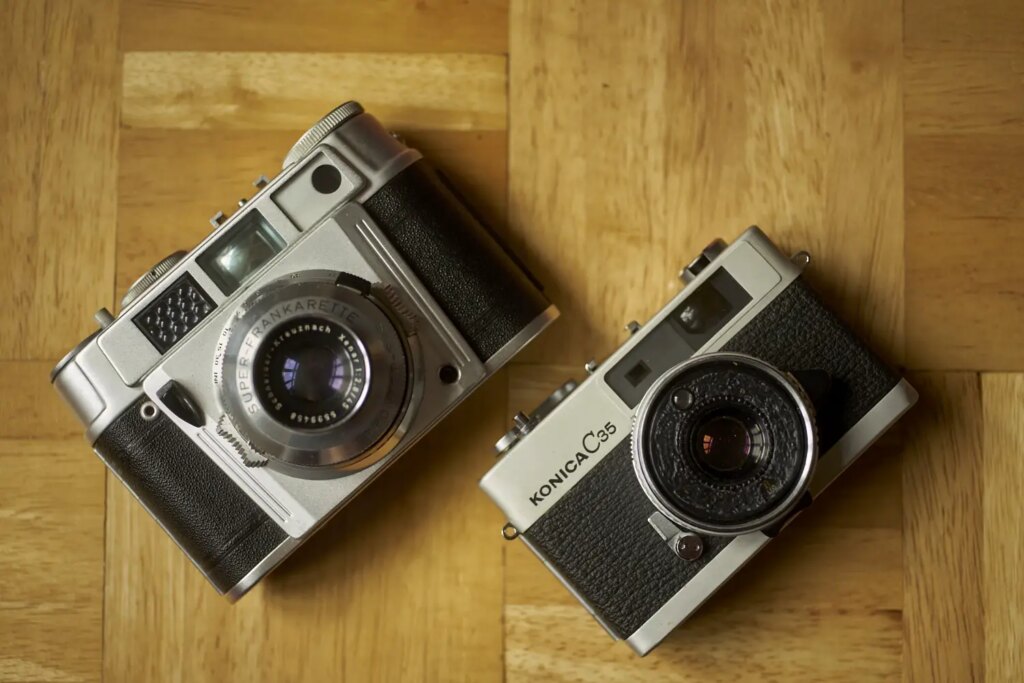
My Canon history
As I got keener on photography I wanted more control and access to a faster lens. My father suggested a fixed lens Canon rangefinder camera with an f/1.9 lens which was on sale second-hand from our local camera shop.
The original Canonet is an unconventional camera. It uses a selenium meter – not uncommon in the days when the original Olympus Trip was a big seller. Back in the 1950s quite a few cameras had ‘novel’ methods of winding film on. The Canonet winder is on the base of the camera, with a fold-down trigger for use with the left hand.
A short-lived romance
The day came when I had the camera in my 16-year-old hands. The first night I owned it I was running the wind-on and shutter by way of testing and getting acquainted. Before too long the camera jammed. I swear I wasn’t abusing it. I was gutted. Dad (who was an instrument maker) looked at it and confirmed that it was something serious. The camera went back to the shop the next day and we got a refund. I ended up spending a bit more of my parents’ money to buy a Konica Autoreflex T3 from a guy who worked for my dad.
The Canon price premium
Thus ended my first foray into being a Canon shooter. I’ve not owned a lot of Canon cameras since. Not that they aren’t good, but the kudos of the Canon badge has always tended to make their cameras a little more expensive than the alternatives, and I tend toward the frugal. When I went through a phase of buying up the desirable cameras of my youth, the Nikons and Canons were never quite at bargain prices. I snapped up Pentax, Minolta and Olympus cameras instead.
The exceptions to this were:
- a Canonet 28 which I’ve reviewed previously (and was most impressed with) and
- the carcass of a Canonet like the one I first owned that I bought for curiosity’s sake and which ended its life as a strip-down for another 35mmc article.
My latest Canonet (and its issues)
The other week I saw another working Canonet on a popular auction site and I put in my customary derisory bid. No-one else was interested, so I finally find myself in possession of what appears to be a functional model.
An initial investigation showed up two issues. The first was a vertical misalignment of the rangefinder and the second was a slow diaphragm.
Misalignment
The vertical misalignment is easily dealt with. All later Canonets have an easy way of accessing the rangefinder vertical adjustment. This, as the earliest of the series does not, but due to the placement of the wind-on mechanism, the top-plate can easily be removed, giving access to the rangefinder mechanism.
Diaphragm
The slow diaphragm is not a huge issue. It is only slow to open up again after a shot, taking 20-30 seconds to drift fully open.
Checking the metering out
A look at the meter while the top was off showed no particular issues with the trap-needle metering. I know that getting to the diaphragm to clean it up would involve peeling back the pristine leatherette. My suspicion is that the camera will work fine even with the slow diaphragm and is well worth a film.
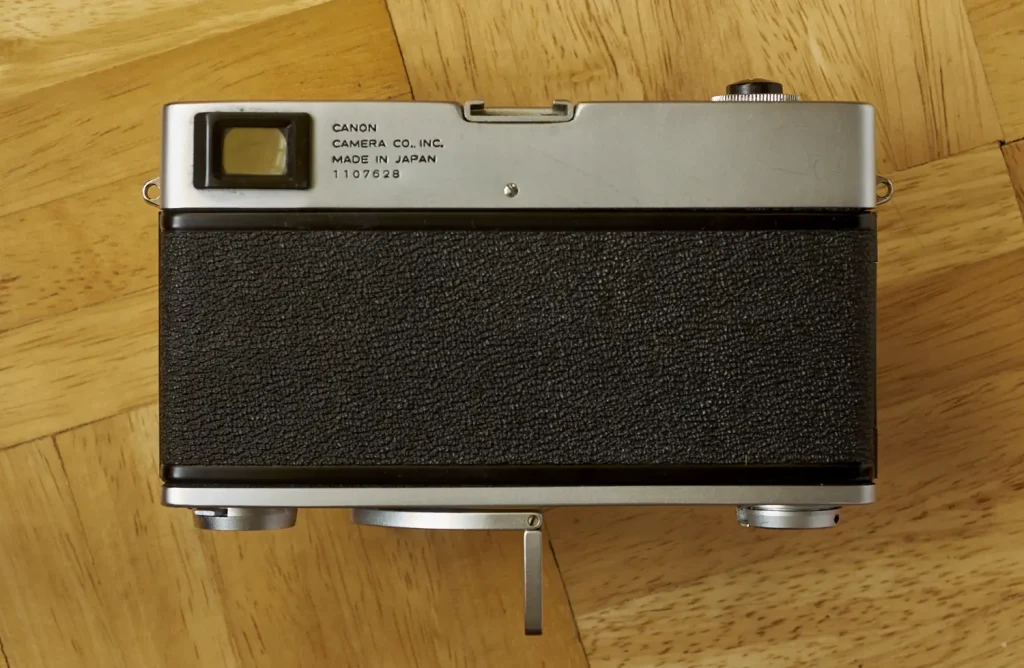
So what is it like?
Comparisons
For a rangefinder camera, the Canonet is large. The table below shows the Canonet of 1961 compared to the Super Frankarette of 1959, the Olympus 35 SP of 1969, the ‘New’ Canonet 28 of 1971 and the Konica Auto S3 of 1973.
 There is a general trend of these cameras getting smaller with time, but the Canonet was quite a big camera for 1961. It is a bit of a beast.
There is a general trend of these cameras getting smaller with time, but the Canonet was quite a big camera for 1961. It is a bit of a beast.
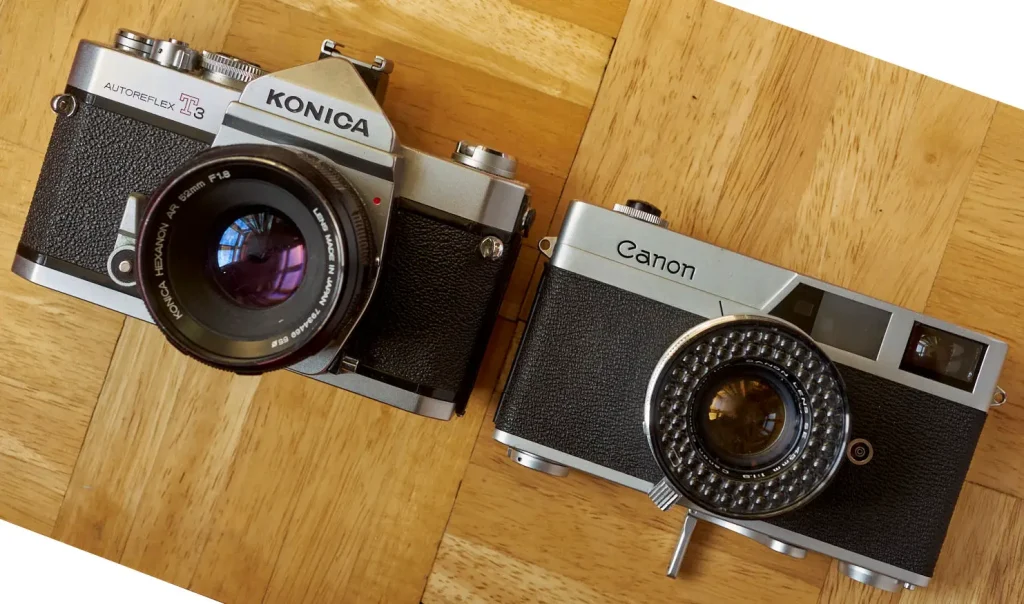
Canonet Layout and Controls
Although they were all just called Canonet, there were actually three different versions of this model. Mine is the third of those, showing apertures in the viewfinder and with the ability to set ASA values up to 400. Early models only went to 200. The low setting for ASA is a very low 10. You can choose between M and X synch. There is also a delay timer on the lens barrel. Speeds go from 1/500 out to 1 second, plus a B setting. Apertures are from f/1.9 to f/16 plus an auto setting.
On Top
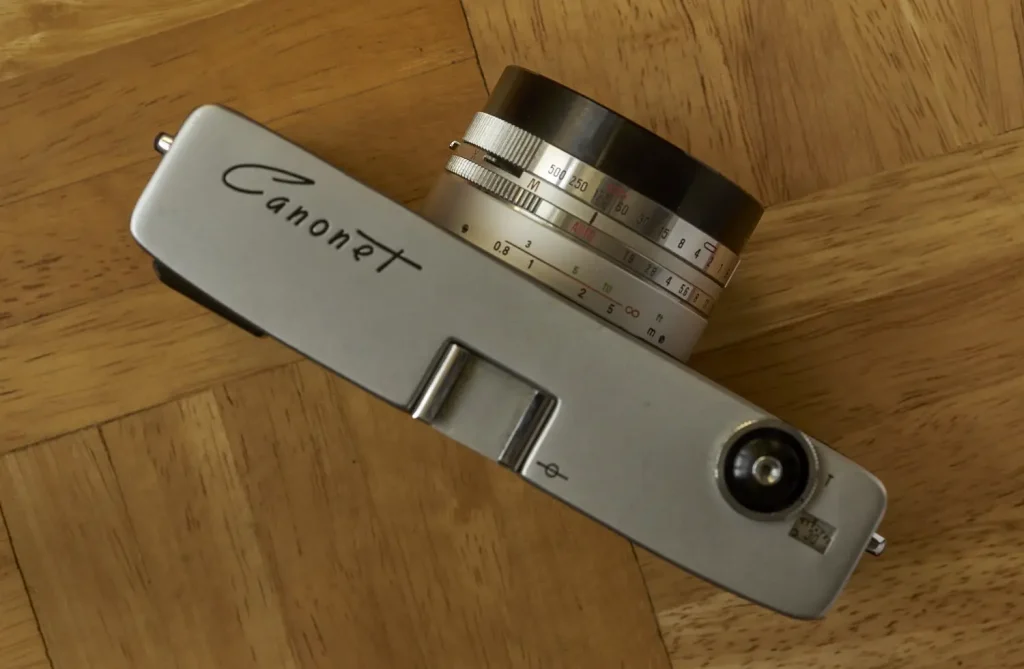
The top plate is positively sparse. It has a cold shoe, an exposure counter and a broad shutter release with a collar that offers a T setting that allows you to lock the shutter open on the B setting.
The unusual winder layout means that the film travels right-to-left. The absence of a rewind crank on the top-plate leaves space for the viewfinder at the extreme left of the top-plate.
The Canonet has a very long rangefinder base for this type of camera – around about 45 mm. In comparison the Auto S3 has a rangefinder base of about 28 mm.
Down below
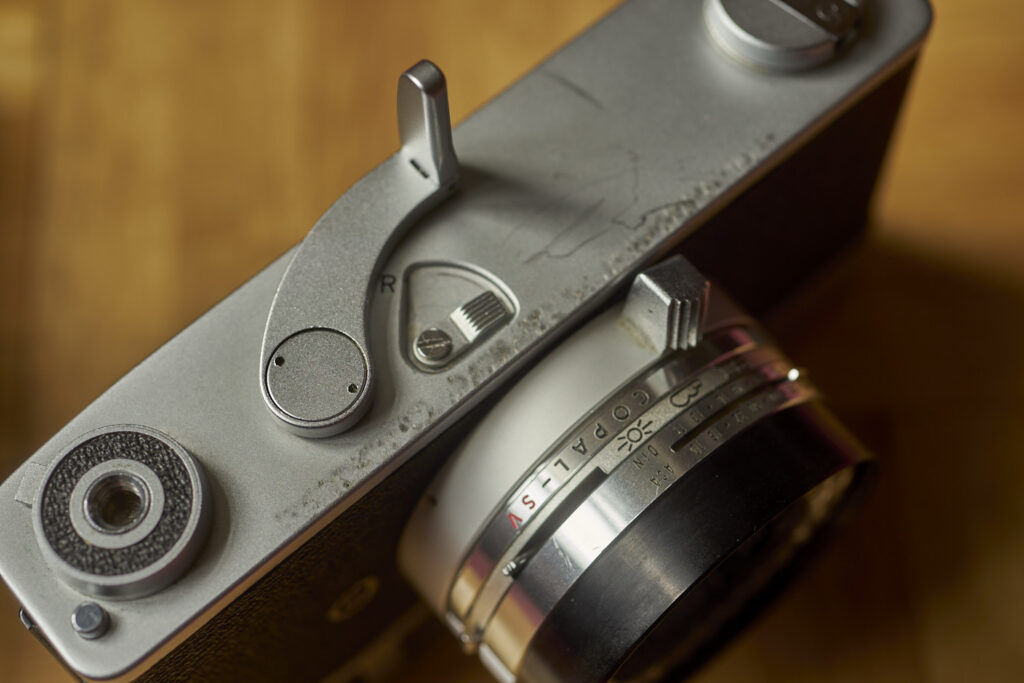
Underneath you have the big articulated wind-on lever, with a section that folds down for operation with your left hand. There is also a rewind switch and a rewind crank. The tripod socket is on a built-up section over on the left. There is also a safety catch and a release button for the camera back.
Canonet In Use
Selenium meters are not at their greatest in low light. Unfortunately the Canonet only shows you the chosen aperture for the speed you have set when you press down the shutter release. The earliest version didn’t even show an f-stop, just red bands for over and under exposure.
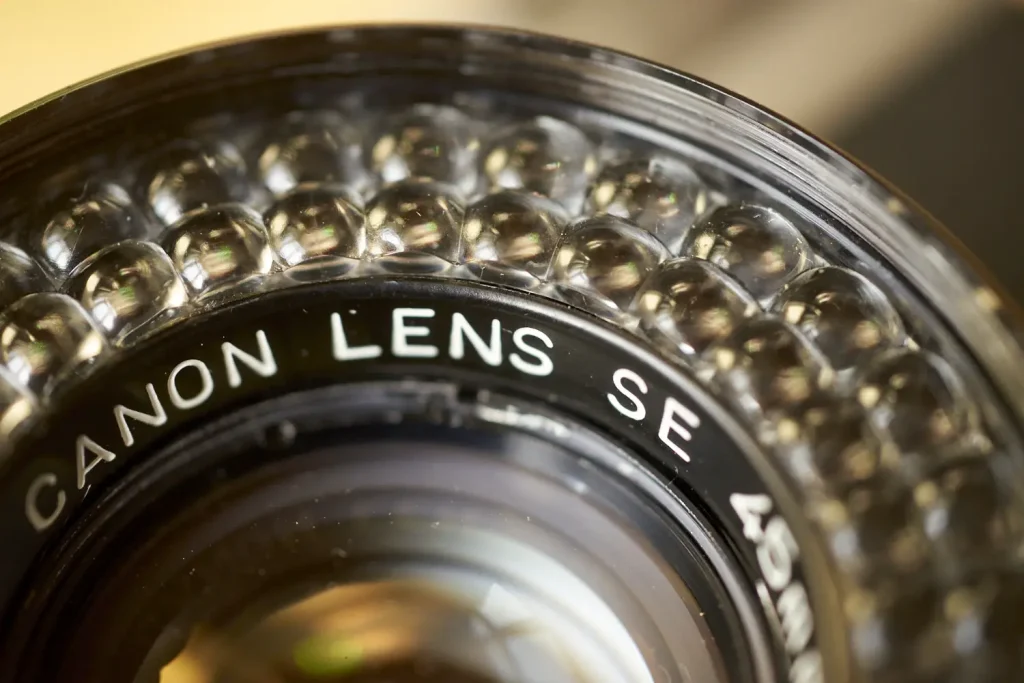
In use, I found an unexpected benefit in the placement of the rewind crank. Because of the way I hold the camera, I tend to feel the rewind crank turn against the skin of my hand as I wind on, confirming film travel.
Automatic
Set to automatic, the camera will not take a shot if it can’t set an aperture to match the shutter speed. This makes it quite difficult to shoot the lens wide open. The camera does not show you what aperture it is going to set until you press the shutter release. I’d like to only have to use the shutter release when I want to take a shot, but a half-press becomes exploratory if you want to use automatic exposure.
Manual
In manual mode the camera will never stop you shooting. This probably reflects the way people regarded auto settings back in the early 60s. The uninitiated set the camera to auto and the camera stops them from wasting film, while the ‘photographer’ will go for manual. However, this camera doesn’t even allow you to use the selenium meter to get an idea of what settings to use. You really need an external light meter. Luckily such things are available as apps these days.
Canonet Pictures
Did I say two issues? Well, development of the film showed that sometimes the shutter fails to fire. I’m guessing that if you don’t pull the winder fully across the shutter doesn’t quite get set. It wasn’t a big problem though, losing me just 4 shots out of the 36, with the first missed shot not showing up until frame 16.
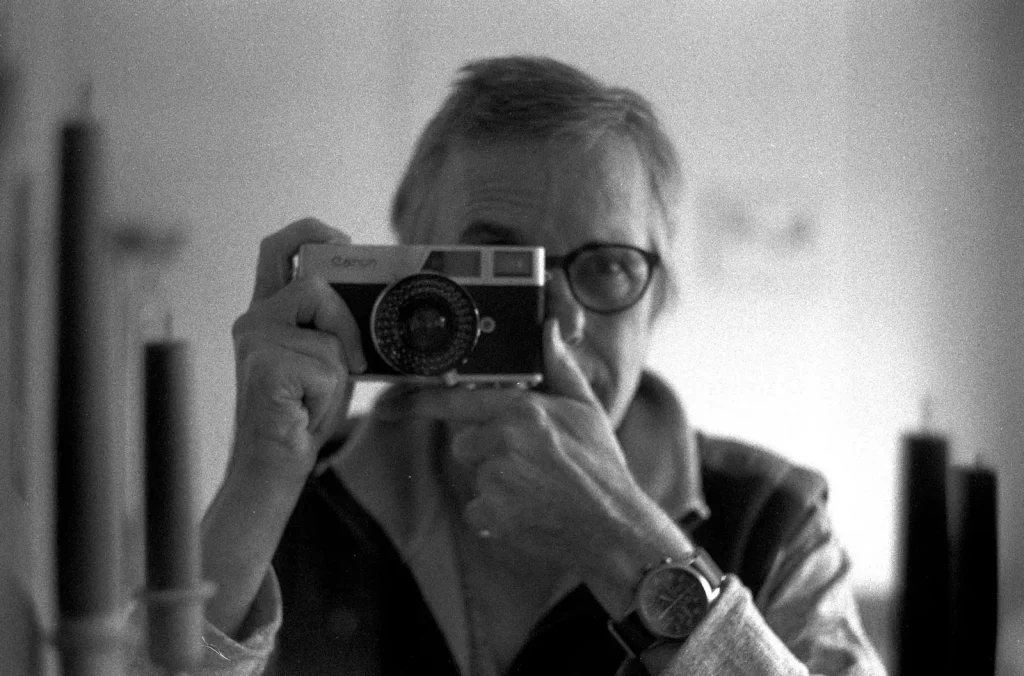
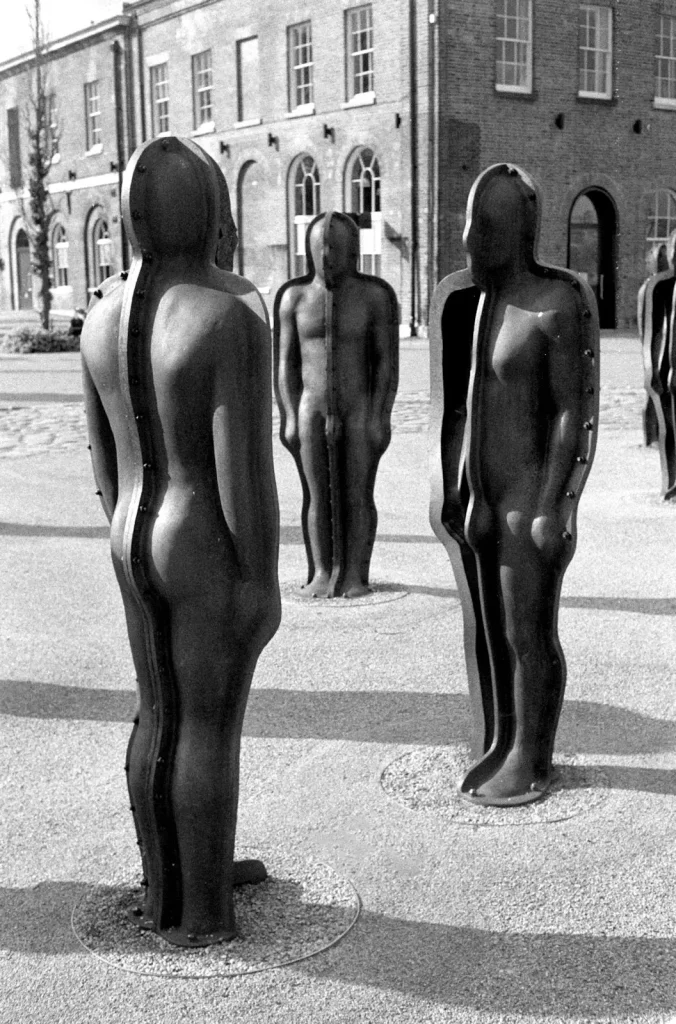
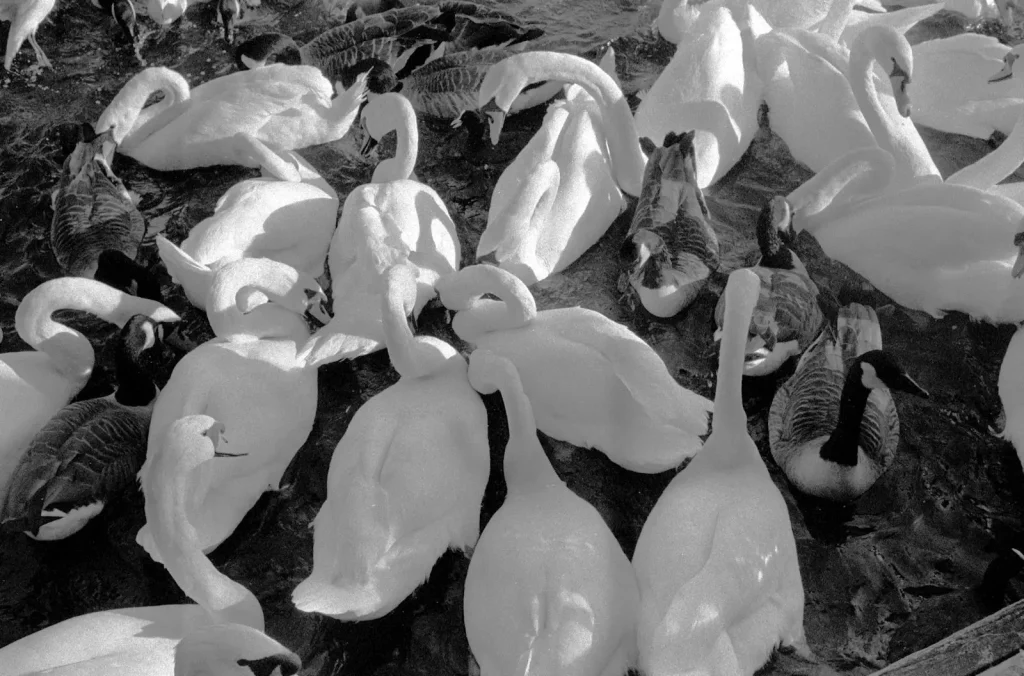
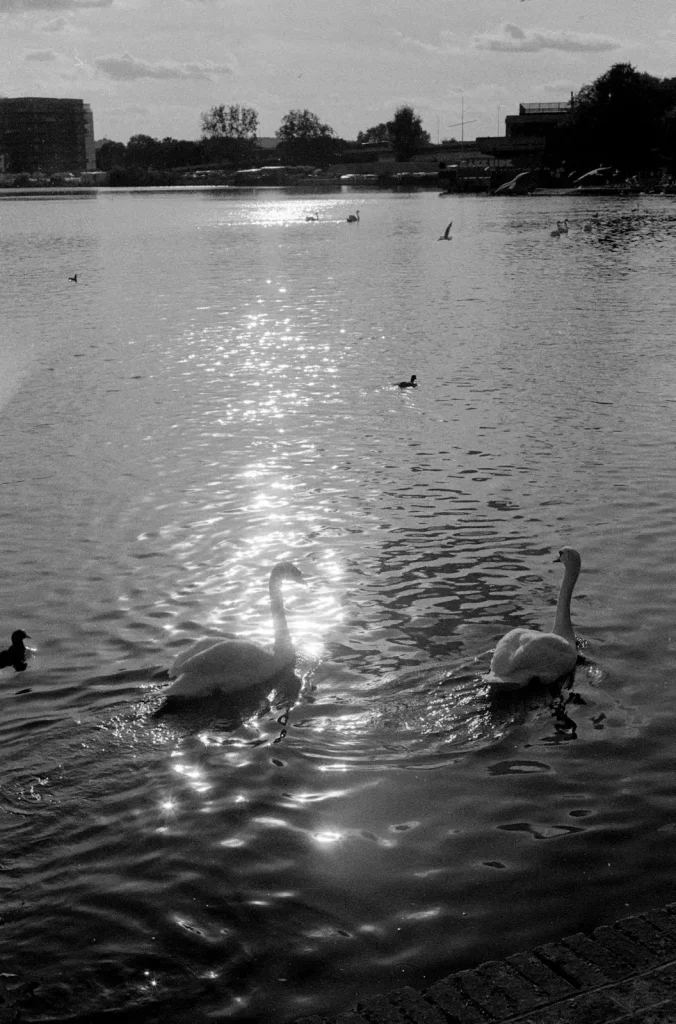
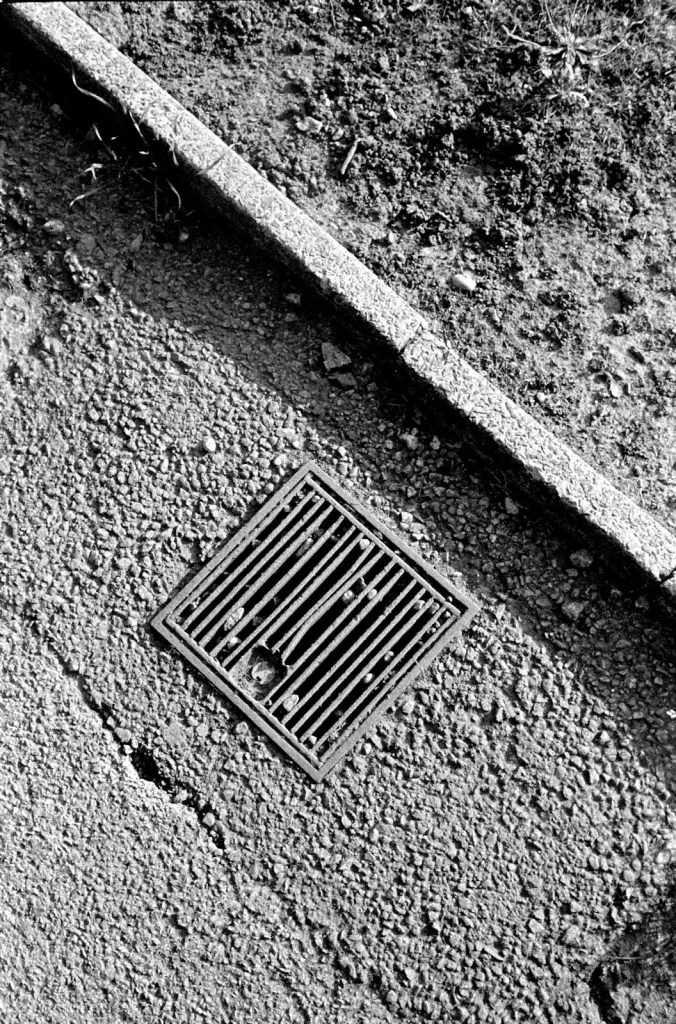
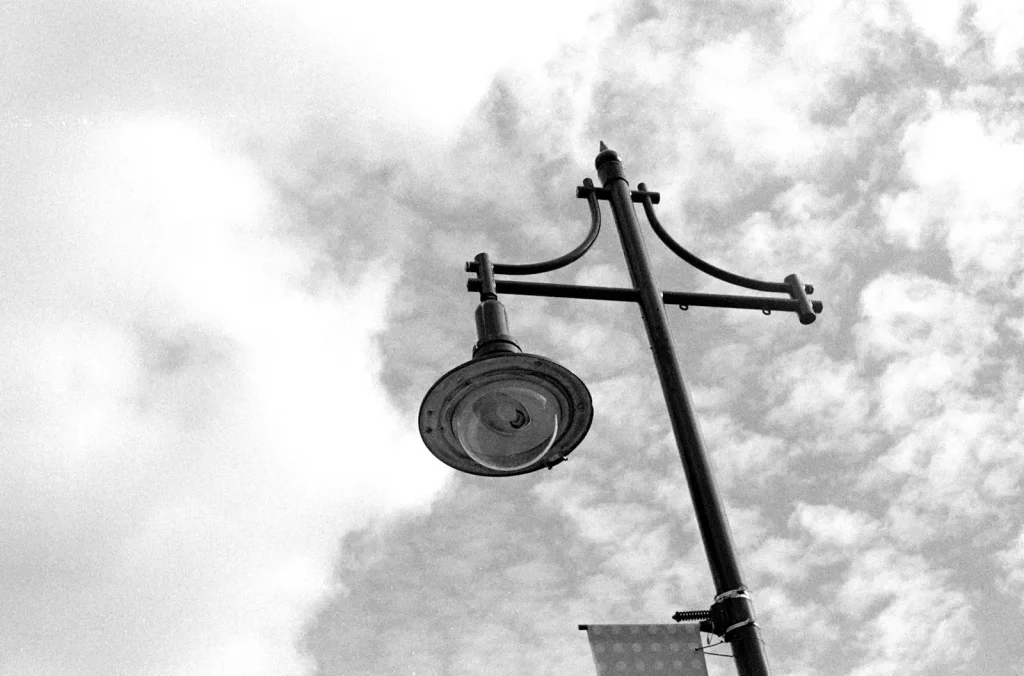
Summing up
Even in manual, freed from the need to operate the diaphragm, the shutter release is a little heavy.
The Canonet is a quirky camera that doesn’t really work as an automatic. The lens is very nice, and the rangefinder base is impressive, although probably overkill for a 45mm lens. As a manual camera, it works well. The look is very much that of a pumped up Olympus Trip. Its size does not make it stealthy, and the heavy shutter release does detract from enjoyment of the camera, but it is capable of excellent results. The good news is that it doesn’t matter if you get one of the earlier cameras with no apertures in the viewfinder or that are limited to 200 ISO film. You get the best out of these cameras by going fully manual.
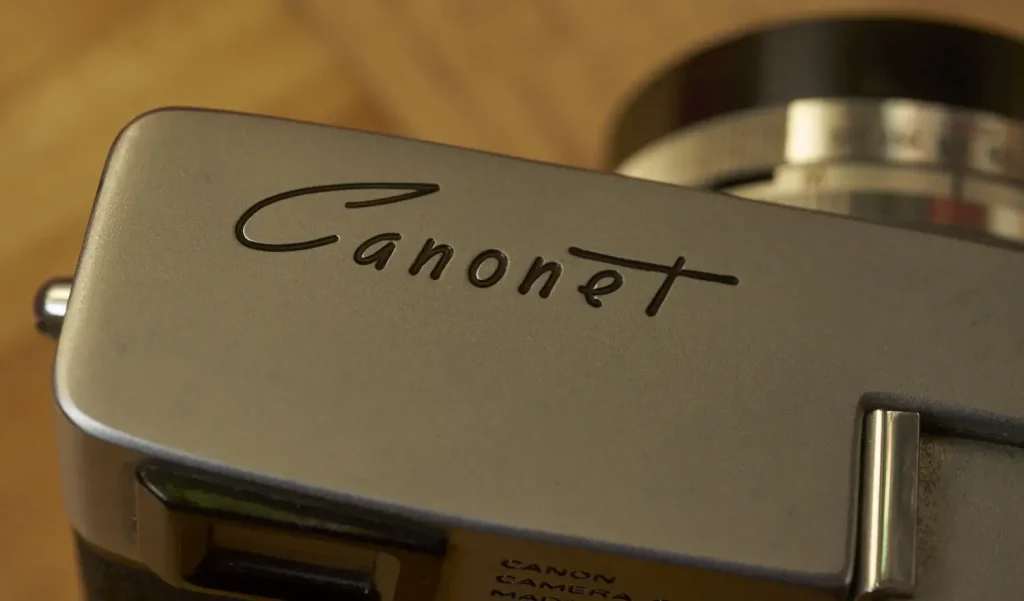
As I suspected, the slow diaphragm was no big issue. I’ll forgive the Canonet for the odd missed picture as well – as I think that anything/one getting on for 60 deserves benefit of the doubt. But in truth, I think I got more out of the Autoreflex (which is still going 43 years later), than I ever would have from the Canonet. However, I’ve enjoyed the opportunity to run a film through one at last.
Share this post:
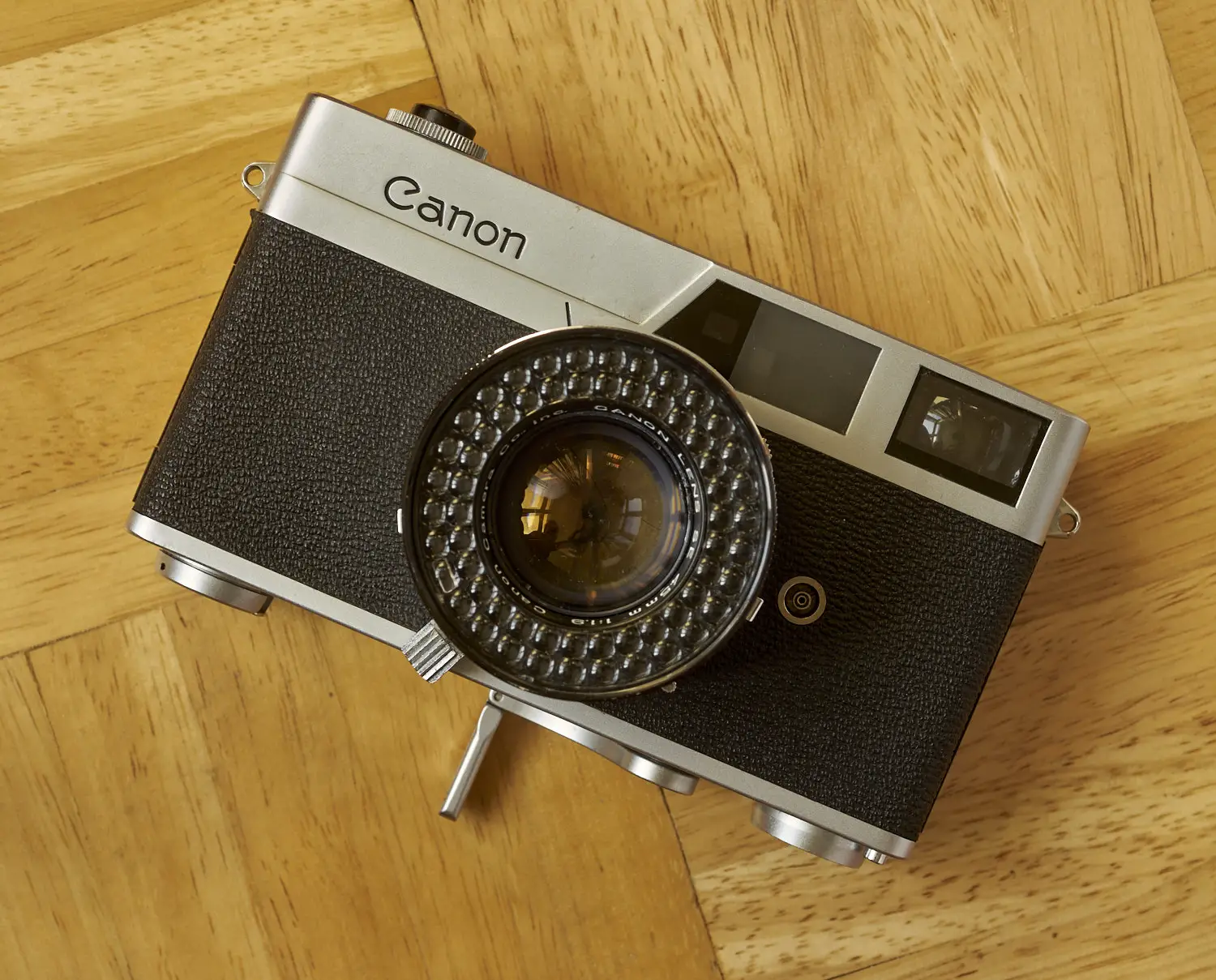








Comments
Omer on Canonet Review – 43 Years in Preparation – By Bob Janes
Comment posted: 01/11/2021
Indeed it was big and heavy, all metal except for the viewfinder ‘glass’, which I think was transparent plastic but my memory is a bit fuzzy on that.
Somehow I lost it, and though I wish it were still in my possession, I ain’t buying another bloody camera!
Cheers!
Comment posted: 01/11/2021
Omer on Canonet Review – 43 Years in Preparation – By Bob Janes
Comment posted: 02/11/2021
Omer on Canonet Review – 43 Years in Preparation – By Bob Janes
Comment posted: 02/11/2021
Comment posted: 02/11/2021
Kodachromeguy on Canonet Review – 43 Years in Preparation – By Bob Janes
Comment posted: 02/11/2021
Comment posted: 02/11/2021
Comment posted: 02/11/2021
Comment posted: 02/11/2021
RJ on Canonet Review – 43 Years in Preparation – By Bob Janes
Comment posted: 02/11/2021